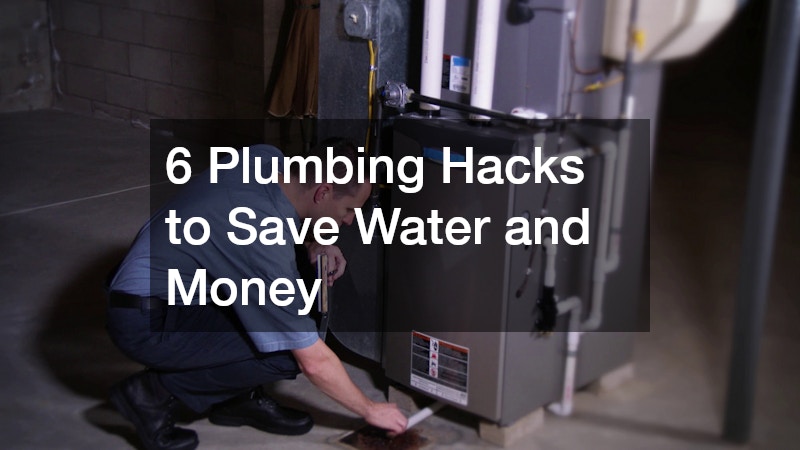Plumbing is one of the most essential systems in any household, yet it often goes unnoticed until something goes wrong. From leaky taps to inefficient water heaters, poor plumbing practices can lead to significant water waste and rising utility bills.
With rising concerns over water scarcity and energy costs, Australian homeowners are increasingly seeking ways to improve their household efficiency. By adopting a few simple plumbing hacks, it’s possible to conserve water, reduce your bills, and support sustainability efforts, all without undertaking major renovations or replacements.
Check for Hidden Leaks Regularly
One of the most overlooked plumbing issues is a hidden leak. Even the smallest, barely noticeable drips can add up to thousands of litres of water lost each year. Leaks can occur in taps, showerheads, toilet cisterns and even under the floor or behind the walls. Conducting regular inspections or hiring a licensed plumber for a maintenance check can help you spot problems early. A good way to test for leaks is by turning off all water-using appliances and checking your water meter. If the meter continues to tick over, it’s a sign of a leak somewhere in your system. Prompt repair not only conserves water but also prevents damage that could be far more costly in the long run.
Install Low-Flow Fixtures
Modern plumbing technology has made it easier than ever to save water without compromising performance. Low-flow showerheads, taps and dual-flush toilets are widely available and easy to install. These fixtures are designed to maintain water pressure while using significantly less water per minute. In Australia, the WELS (Water Efficiency Labelling and Standards) scheme provides helpful ratings to guide your choices. A showerhead with a three-star WELS rating can save up to 10 litres per minute compared to older models. Over the course of a year, this can amount to thousands of litres saved and a noticeable reduction in water bills.
Fix Dripping Taps Immediately
That constant drip from a bathroom or kitchen tap may seem harmless, but it can waste hundreds of litres of water every month. A single dripping tap at one drip per second can waste more than 12,000 litres annually. Often, the cause is a worn washer or O-ring—an easy fix that requires minimal tools and effort. Replacing these components is a straightforward plumbing task that most homeowners can manage themselves. Taking action as soon as you notice a leak can prevent the problem from worsening and avoid higher repair costs down the track.
Use Greywater for Outdoor Needs
Reusing greywater—relatively clean wastewater from baths, showers and laundry—can drastically cut your household’s fresh water use. With the right plumbing setup, you can divert greywater for use in gardens or for flushing toilets. There are both permanent greywater systems and portable devices available, depending on your budget and household needs. It’s important to follow local council regulations, as not all greywater sources are suitable for reuse without treatment. When properly managed, greywater systems offer an eco-friendly way to maintain gardens, particularly during dry seasons or water restrictions.
Optimise Hot Water Usage
Water heating can account for up to a quarter of the average household’s energy bill. One way to reduce this cost is by lowering the thermostat on your hot water system. Many units are set higher than necessary; reducing the temperature to around 60°C still provides safe and comfortable hot water while using less energy. Additionally, insulating your hot water pipes helps retain heat, reducing the need for reheating. Shorter showers and the use of efficient appliances also contribute to energy and water savings. If your system is old or inefficient, consider upgrading to a solar or heat pump unit for long-term benefits.
Be Smart About Appliance Use
Many modern appliances offer eco-settings or delay-start features that make them more water and energy-efficient. Only running dishwashers and washing machines with full loads maximises each use while minimising waste. Upgrading to appliances with high water-efficiency ratings is a smart investment in both your wallet and the environment. If you’re in the market for new appliances, always look for the WELS label and compare water usage figures. Pairing efficient machines with good plumbing habits, like regularly cleaning filters and inspecting hoses, can further reduce water wastage and extend the lifespan of your appliances.
Saving water and cutting costs doesn’t require major overhauls or specialist knowledge. By implementing a few simple and effective plumbing strategies, Australian homeowners can make a meaningful difference. From fixing leaks and installing low-flow fixtures to reusing greywater and managing appliance usage, these hacks offer tangible results. Not only do they promote sustainability, but they also keep utility bills under control and help preserve our precious natural resources. Staying proactive with your household plumbing is one of the smartest moves you can make for both your finances and the environment.

